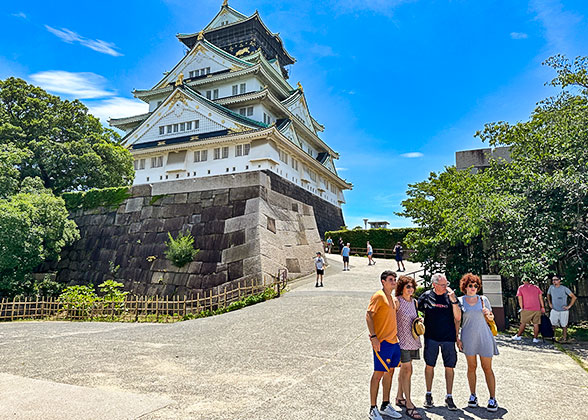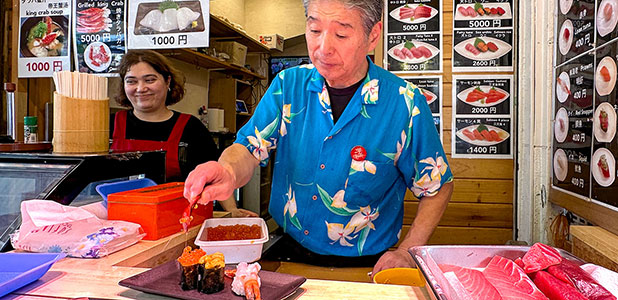Shuri Castle
Located on the islands between Taiwan and Kyushu, Shuri Castle had been the political, diplomatic, and cultural center of the Ryukyu Kingdom (1429-1879) for almost 450 years. It went through lots of tough battles with the Ryukyu Kingdom.Shuri Castle faces the west and can be divided into a ceremonial area where rituals and prayers were conducted, a residential area for the royal family, and a central administrative area that contains the main hall. As for the construction style of Shuri Castle, Ryukyu Kingdom absorbed a lot from China and Japan through its communications with these two countries at that time.
Unluckily, Shuri Castle suffered from a great deal of fires in the past due to its wooden construction materials and wars. Even with the burnt remains, Shuri Castle and some of its related buildings were designated by UNESCO as a world heritage site in 2001. The latest fire happened in 2019, and this accident was so severe that it burnt a large part of Shuri Castle to the ground and led to years of rebuilding. It’s estimated that the rebuilding will be finished in 2026.
Spots You Should Not Miss in Shuri Castle:
Central Area:
The central area mainly includes the Hoshinmon gate, primary hall, and yohokeriden hall behind the primary hall. It is currently under reconstruction and visitors can see the unusual reconstruction of ancient palace and the unique construction materials here.Besides, visitors can enjoy the whole view of Shuri Castle on the observation deck in the central area.
Shurei-mon Gate:
Shurei-mon Gate is the main entrance to Shuri Castle, built in the early 16th century. The red hue of Shurei-mon Gate demonstrates the uniqueness of Okinawa’s construction different from those white-black buildings of other regions in Japan. The plaque hanging over the gate writes “a country that follows ritual propriety”. Shurei-mon Gate is printed on the banknote of 2,000 JPY.Sonohyan Utaki Ishimon Gate:
Sonohyan Utaki Ishimon is a stone gate leading to a holy grove. If the king left the city, he would come to Sonohyan Utaki Ishimon to pray for a safe journey. When it comes to the style of Sonohyan Utaki Ishimon, it also combines the essence of Chinese and Japanese architecture and applies the design and patterns more often seen on wooden constructions. For example, the vivid sculptures on the ridge.Kankaimon Gate:
To reach the inner city, you must come across Kankaimon gate, meaning “welcome”. It is named so because there were often Chinese messengers visiting the Ryukyu Kingdom through the gate. There are a couple of lion dog statues standing on both sides of the gate. This is a creature mixed by lion and dog, which is the representative image of Okinawan culture. It’s said that it can bring fortune and keep evil spirits away.Tough Rebuilding of Shuri Castle:
The biggest challenge of rebuilding the Shuri Castle is that the related pictures and paintings are almost burnt down in fire. Therefore, it’s difficult to turn the remains into the original appearance. Luckily, the reconstruction team found a painting of the main building, drawn in 1768. They started the rebuilding with the painting and descriptions of Shuri Castle from the elders in the town. It’s their efforts that make it possible for visitors to see the reappearance of Shuri Castle.Ticket:
Adult, 400 yenChildren Under 6, Free
Opening Time:
Charging Zone, aka central part: 9:00-17:30Free Zone: 8:30-18:00, including Shurei-mon Gate, Sonohyan Utaki Ishimon Gate, and Kankaimon Gate.
How to Get Here:
By Train: Take the monorail to Shuri Station. After getting off the train, you can take Bus No.346 ∕No.7 ∕ No. 8 ∕ No. 14 for 4 stops and get off at Shurijo Koen Iriguchi Stop.By Bus: Take Bus No. 1 ∕ No. 14 ∕ No. 346 and get off at Shurijo Koen Iriguchi Stop. After getting off, head towards west and go towards north at the first bend, then you’ll reach Shurei-mon Gate; the total walking time is about 5 minutes.
Visit Nearby Shuri Ryusen:
Shuri Ryusen is the only place where you can experience the dyeing technique of the ancient Ryukyu Kingdom. Owning the sea area with the rich varieties of coral reefs, people here creatively combined coral and dyeing and created the special dyeing technique. Visitors will use fossil coral to dye T-shirts and bags, and are allowed to bring the finished product home.Fare: 3,000 yen
Opening Time: 9:00-18:00




